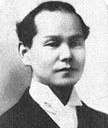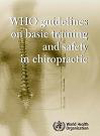About Chiropractic
About Chiropractic
About Chiropractic
HISTORY:
In 1895, a Canadian healer, D. D.(Daniel David) Palmer discovered Chiropractic in the US. The first Japanese Chiropractor is Shegetaro Morikubo, who didn’t return to Japan after his graduation of Palmer School of Chiropractic in 1907. Later, chiropractic was introduced into Japan by Saburo Kawaguchi, who graduated from Palmer School in 1916. The first chiropractic regulation of Japan was established by the governor of Kanagawa prefecture in 1918. This regulation was ended by the Supreme Commander for the Allied Powers (GHQ) after World War II. In 1960, the Supreme Court of Japan decision allowed anyone to practice non-regulated quasi-medical practice, including chiropractic, if it is not harmful to patients.
There were about a dozen who had studied in the US before the war, followed by the first postwar graduate, Kazuyoshi Takeyachi, who returned in 1969 after graduating from the National College of Chiropractic. In 1995 finally the first international standard chiropractic college in Japan, as well as the Asian region, RMIT University Chiropractic Unit-Japan, was established in Tokyo, Japan, and received CCEA (ACCE) accreditation in 2005. As a second international standard school, Murdoch University Japan of Tokyo started in 2006 but was closed in 2010. Since 2011, RMIT University Chiropractic Unit-Japan has been shifted to Tokyo College of Chiropractic (TCC) as an independent chiropractic school.
While many different practitioners, such as bonesetters, masseurs, seitai(Japanese traditional manipulative therapists), and acupuncturists, perform spinal manipulation. The Japanese Association of Chiropractors (JAC), consisting of 70% of qualified chiropractors, is a national member of WFC. In 2014, for the first time in this country, the Japan Chiropractic Register (JCR) submitted the list of registrants to the Ministry of Health, Labour and Welfare for future legislation.

D.D. Palmer
(1845-1913)

Shegetaro Morikubo
(1877-1933)

Saburo Kawaguchi
(1885-?)

WHO guidelines on basic training
and safety in chiropractic
DEFINITION OF CHIROPRACTIC:

‘Chiropractic (from Greek meaning treatment by hand / Kairopuraktikku-Japanese pronounciation) is a health profession concerned with the diagnosis, treatment and prevention of disorders of the musculoskeletal system, and the effects of these disorders on the nervous system and general health. There is an emphasis on manual techniques, including joint adjustment (chiropractic manipulation).’
(World Federation of Chiropractic 1999)
‘A health care profession concerned with the diagnosis, treatment and prevention of disorders of the neuromusculoskeletal system and the effects of these disorders on general health. There is an emphasis on manual techniques, including joint adjustment and/or manipulation, with a particular focus on subluxations.’
(World Health Organization 2005)
LEGISLATION:
Medicine has a monopoly in Japan, but many drugless healing arts, including chiropractic, are strongly supported by Japanese people. Chiropractic has not been legislated because of opposition from the medical profession and other established professional groups such as masseurs, Shiatsu practitioners, acupuncturists, and bonesetters. Precedence by the Supreme Court decision in 1960 allows anyone to practice spinal manipulations, including chiropractic, if it is not harmful to people. Today’s laissez-faire situation has created numerous entrepreneurs and proprietary schools. Under these circumstances, ceasing the local standard programs and starting the new international standard colleges in the country will be the key to the future direction of the Japanese profession. In 1991, “Health Science Research Report on Medical Research on Manipulative Therapy for Diseases of Spinal Origin” (known as the Miura Report) was published by the former Ministry of Health and Labour (current Ministry of Health, Labour and Welfare), and based on this 1991 report, the MHLW maintains that the scientific evaluation of the medical effectiveness and safety of chiropractic care has not yet been established.
CHIROPRACTIC IDENTITY:
🔹Chiropractor

- is a spinal health care expert in the health care system.
- can improve function in the neuromusculoskeletal system, and overall health, wellbeing, and quality of life.
- has a specialized approach to examination, diagnosis, and treatment, based on best available research and clinical evidence with particular emphasis on the relationship between the spine and the nervous system.
- is an expertly qualified provider of spinal adjustment, manipulation and other manual treatments, exercise instruction and patient education.
(World Federation of Chiropractic 2005)
🔹Chiropractors in Japan
In countries with legislation for chiropractors, the following conditions are typically required:
Graduation from an accredited chiropractic program (which involves 4 to 6 years of education in university)
Passing a national or state board examination (or an equivalent test)
Registration with a regulatory authority.
*In some countries, clinical residency may also be required.
In Japan, there is no legislation for chiropractors, and the profession is currently a mix of the international standard and local standard practitioners. The Japan Chiropractic Register (JCR) has established a voluntary registration system based on self-regulatory standards and submits the registry of certified chiropractors to the Ministry of Health, Labour and Welfare.
Even for licensed medical professionals such as medical doctors, dentists, nurses, physical therapists, occupational therapists, massage and acupressure therapists, acupuncturists, moxibustion therapists, and judo therapists, it is recommended that they obtain certification of registration with the JCR if they wish to practice as chiropractors.
🔹Numbers of chiropractors in the world
Total number of chiropractors (DC) in the world: over 104,000 practitioners.
- The Current Status of the Chiropractic Profession, World Federation of Chiropractic
- The chiropractic workforce: a global review
- *Key Facts, American Chiropractic Association
- **Chiropractors, U.S. Bureau of Labor Statistics
- ***Quick Facts, Canadian Chiropractic Association
- ****Statistics, Chiropractic Board of Australia
- *****Registration statistics, General Chiropractic Council
- ******Annual Reports, New Zealand Chiropractic Board
- *******Chiropractic in Denmark, Dansk Kiropraktor Forening
- ********Registration, Chiropractic Council Hong Kong
GUIDELINES:
🔹WHO document of guidelines
“WHO Guidelines on Basic Training and Safety in Chiropractic” was compiled in November, 2005. Firstly the English edition is published along with French and Spanish editions, followed by Chinese, Finnish, German, Indonesian, Italian, Portuguese and Turkish. Japanese edition of this guidelines document is available from mid June 2006 with the WHO approval of translation right.
🔹Chiropractic guidelines by the request of the NCAC
Japanese Association of Chiropractors released Chiropractic Guidelines on Safety and Advertising by the request of the National Consumer Affairs Center of Japan (NCAC) in January 2013. This is because an increased number of accidents by manual therapists including chiropractic practitioners was reported by the NCAC in August 2012.

